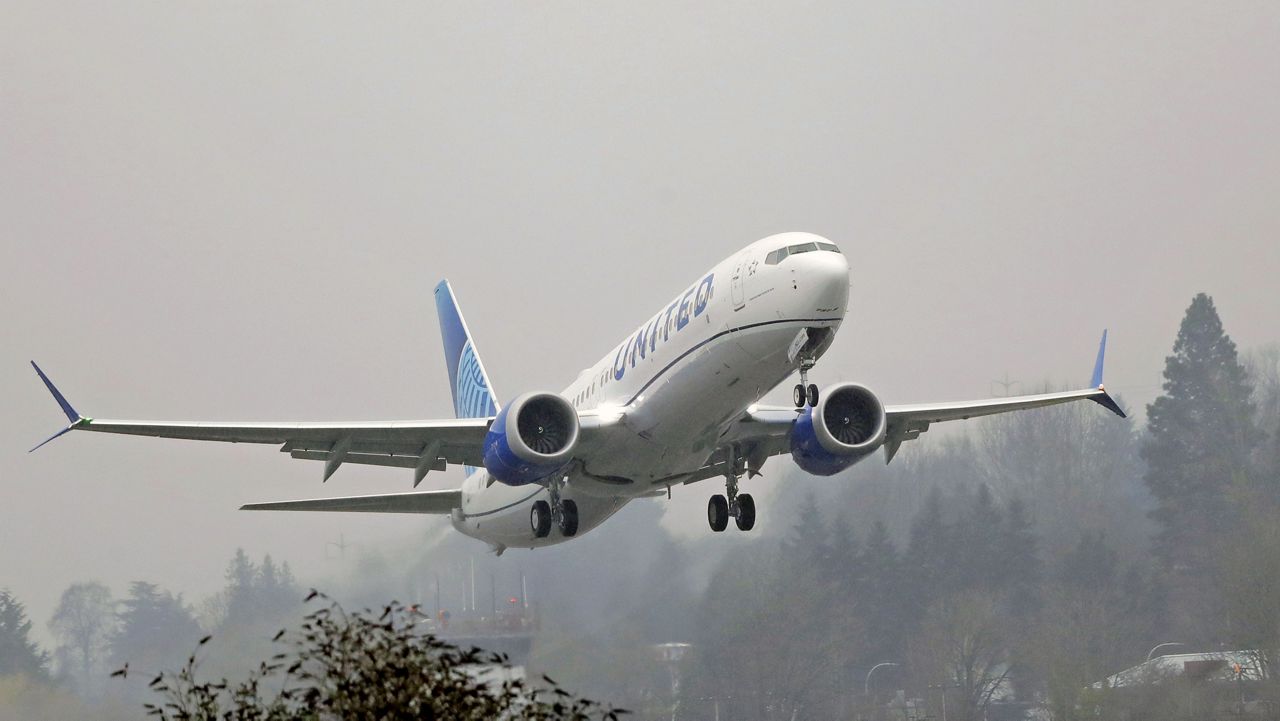After being grounded for nearly two years, the Boeing 737 Max is making its return to the United States skies on Tuesday.
American Airlines Flight 718 took off from Miami en route to New York's LaGuardia Airport on Tuesday morning following a 20-month review process after a pair of deadly crashes overseas, ending a fraught period for the aviation giant.
A spokeswoman for the airline says about 100 passengers are booked to fly on the plane, which seats 172.
Regulators around the world grounded the Max in March 2019, following the crash of an Ethiopian Airlines jet shortly after takeoff, killing all 157 people aboard. That happened less than five months after another Max flown by Indonesia’s Lion Air plunged into the Java Sea 13 minutes after takeoff, killing all 189 passengers and crew.
Federal Aviation Administration chief Stephen Dickson signed an order in November rescinding the grounding.
The FAA says the order was made in cooperation with air safety regulators worldwide.
The move follows exhaustive congressional hearings on the crashes that led to criticism of the FAA for lax oversight and Boeing for rushing to implement a new software system that put profits over safety and ultimately led to the firing of then-CEO Dennis Muilenburg.
Investigators focused on anti-stall software that Boeing had devised to counter the plane’s tendency to tilt nose-up because of the size and placement of the engines. That software pushed the nose down repeatedly on both planes that crashed, overcoming the pilots’ struggles to regain control. In each case, a single faulty sensor triggered the nose-down pitch.
The new software now requires inputs from two sensors to activate the software, which Boeing says does not override pilot controls like it did in the past. The company changed the software so it doesn’t repeatedly point the nose of the plane down to counteract possible aerodynamic stalling.
“These events and the lessons we have learned as a result have reshaped our company and further focused our attention on our core values of safety, quality and integrity,” Boeing CEO David Calhoun said in a statement in November, when regulators cleared the plane to fly once more.
Some American passengers are skeptical about flying the 737 Max after the deadly crashes, according to a recent Reuters-Ipsos poll, though the same poll showed that Americans are less aware of the incidents than they were in a previous poll.
The poll found that when told about the plane's previous safety issues, 57% of those surveyed said they were not likely to fly in a Boeing 737 Max; About 37% respondents said they would likely fly in a 737 Max once it has been in the air for six months or more.
“We continue to work closely with global regulators and our customers to support the safe return of the fleet to service around the world," a spokesperson for Boeing said in response to the poll.
Two other domestic airlines, United and Southwest, count the 737 Max among their fleets, but have not yet added the plane to their schedules.
The Associated Press contributed to this report.



